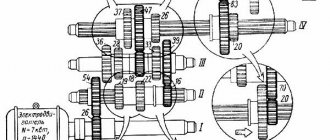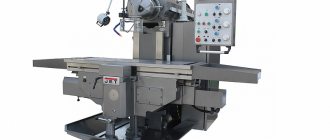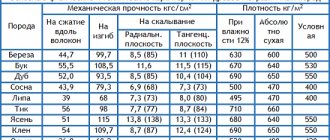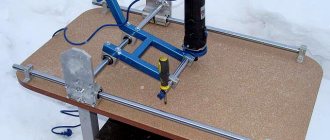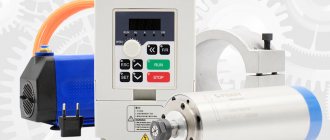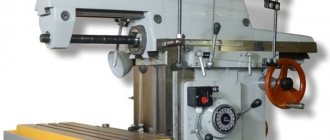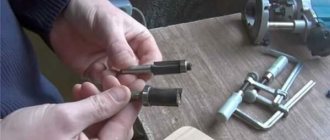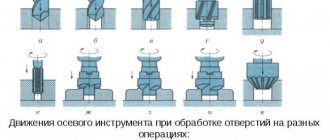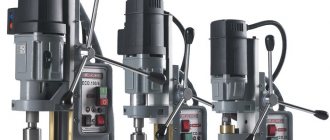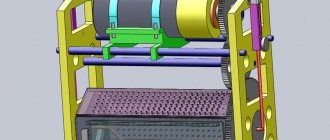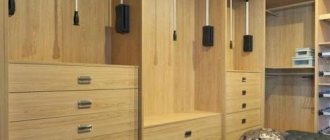Various machine tools can be used to process metal sheets and parts. One of the most popular installations of this type is the vertical milling machine (VMS). But what features does this equipment have? What types of vertical milling machines are there? And what other machines are presented in Russia? These issues will be discussed in the article.
General information
A vertical milling machine is a group of metal-cutting units that perform surface processing using a cutter part. VFS differ in many parameters, but in all of them the processing cutter is fixed in the installation in a vertical position. Vertical machines are mainly used for processing metals, but they can also be used to process other materials - wood, plastic, composite compounds.
A vertical milling machine allows you to process parts of any shape, size, size, and with its help you can perform all basic operations - cutting, drilling, removing the top layers of material. The main producing countries of VFS are Russia, Germany, Czech Republic, Japan, China. Engineering and technical capabilities depend on the design, and the average installation cost ranges from 100 to 500 thousand rubles. Models with numerical control (CNC) are several times more expensive - their price ranges from 350 thousand to 2 million rubles.
Technical capabilities
Since the machine is characterized by a vertical arrangement of components, you need to know and take into account the height of the model and its dimensions. You can evaluate the technical capabilities of the design by answering the following questions:
- What power does the power plant have?
- Is there a cooling system?
- What type of control: manual or electronic?
- How many speed switching speeds?
- How can you characterize the course of the table?
- What is the number of revolutions of the spindle head?
- What are the restrictions on the workpiece in terms of weight and dimensions?
All these questions can be answered by studying the technical data sheet of the model. This will allow you to make the right choice.
Design
All VFS consist of the following elements:
- Foundation slab. Acts as a base on which all other parts (frame, console) are attached. The plate has a high weight, which allows you to securely fix the installation on the site. The plate is wider than the frame with the console installed, however, compact models of machines may have a plate of reduced dimensions.
- Block fixed bed. The part is attached to the top of the stove and acts as a base on which the console and trunk are installed. An electric motor is also attached to the frame, which powers other installation components (milling cutter, console table, CNC).
- Fixing trunk. The spare part is installed on top of the frame. The trunk is long, and at its end the main elements of the milling unit (cutter and spindle) are installed to process the part. Ancillary parts can be installed on the trunk - power regulator, CNC panel.
- Spindle and cutter. The spindle is a vertical shaft to which a cutter is attached using clamps or threads. It is a tool to which one or more machining teeth are attached. During operation, the cutter rotates at high speed and processes metal (cutting, drilling, removing layers). The spindle and cutter are attached to the fixing trunk.
- Processing table. The table is an elongated movable surface on which the surfaces to be processed are placed. It is mounted on a cylindrical pole, which allows its height to be changed (mechanically or electrically). Many vertical milling machines also contain a bracket-console on which the processing table is attached (we will look at this issue in more detail below).
Specifications
The technical characteristics are somewhat similar to the previous model - 6P12. But some structural components are different. There is also a table of a different size. If in the model of the P12 series it was 1250 by 320 millimeters, then in the 6P13 it was increased to 1600 by 400 millimeters. Main technical characteristics of the unit:
- distance from the spindle to the surface - from 30 to 500 millimeters;
- to the axis of the spindle guide - 40 millimeters;
- manual movement in the longitudinal direction - 100 mm;
- transverse - 320 mm;
- vertical - 420 mm;
- mechanical movement in longitudinal - 1000 mm;
- transverse - 300 mm;
- vertical - 410 mm;
- maximum part weight - up to 300 kilograms;
- spindle speed - 31.5 to 1600 rpm;
- spindle speeds - 18 tpm;
- spindle end - class 3;
- it is possible to turn off the stop, block the feed and block the separate switching on of the feed;
- main electric motor power - 10 kW;
- cooling equipment - from 125 kW;
- feed drive power - 3 kW.
The weight of the machine model in question is 4200 kilograms (while in the previous model it was 3150 kg - increased by more than a thousand kilograms). Dimensions for installation: 2560 by 2260 by 2120 millimeters.
Work format
The operating principle of the VFS is extremely simple. First, the worker fixes the cutter he needs in a vertical spindle, which will process the part. If necessary, other processing parts (for example, rotating disks) can be used instead of a cutter. After this, the worker places the part he needs on the processing table. If necessary, the position of the table can be adjusted using a cylindrical post. The part can be fixed on the table using special clamps and clamps. At the end, the worker starts the electric motor, which rotates the spindle with the connected cutter.
Directly for processing, a worker can perform various actions - moving the work table, moving the workpiece, adjusting the feed of the spindle with the cutter. To adjust the accuracy and force of processing, the worker can also change the rotation gear, which leads to a change in the rotation speed of the cutter. On modern vertical machines, the cutter can be mounted in a movable block, which allows you to change the location of the cutting part within certain limits. This allows you to improve the operational capabilities of the installation, making it more convenient and versatile.
Cantilever and non-cantilever designs
By design, there are two main VFS models:
- Cantilever structures. Such machine models contain an additional part called a console. It is located under the processing table, and it is attached to a cylindrical post and bed. Often the console is a movable element, so during operation of the machine it is not the table itself that can be moved, but the console installation. The use of a console clamp simplifies the work and also allows you to more securely fix the workpiece on the table.
- Non-cantilever designs. Such models do not contain a console stand, and the table is attached directly to the pillar and frame. The absence of a console increases the rigidity of the VFS, and also makes it possible to process large-sized spare parts that would not fit on the machine if there was a console. In practice, non-cantilever structures are less common than cantilever ones, but they are small in size, so they are used more often in small-scale metallurgy.
According to the design of the VFS, a distinction is also made between standard models and CNC units. The CNC vertical milling machine is additionally equipped with an electric drive system and an electronic panel, which allows you to control the VFS in automatic or manual mode. For example, using CNC, a worker can set the speed of automatic movement of a table with a part, while using buttons or switches he can manually select the rotation speed of the cutter.
To control CNC models, various devices can be used - knobs, buttons. CNC models are more convenient, and a worker will not need much time to master them. However, a CNC vertical milling machine is more complex to manufacture, since it contains many additional parts, assemblies, and autonomous elements. Therefore, CNC models are several times more expensive than manual installations.
What other milling machines are there?
There are also other types of machines - horizontal, drilling, tabletop. They perform the same functions as vertical milling structures, and they are also used mainly for processing products or structures. However, they may have differences - additional components or assemblies, the direction of processing, the presence of auxiliary processing units.
Horizontal milling
In such machines, the spindle is located not in a vertical, but in a horizontal plane, which determines a different way of processing parts. Horizontal installations are great for working with small objects based on metal, wood or plastic. The horizontal location of the fastening allows the use of additional cutting cutters (cylindrical, shaped, end, corner). Horizontal machines can be equipped with auxiliary equipment that allows processing of screw and inclined surfaces, which makes them almost universal.
Drilling and milling
Drilling and milling machines are used for drilling metal, wood, plastic, and ceramic products. An important feature is the unusual arrangement of the tool being processed, so with the help of such a machine you can drill inclined holes and process grooves of large-sized products. The drill head can rotate in both forward and reverse directions, which greatly simplifies the work with such a machine. Drilling and milling machines are now in great demand in both large and small manufacturing industries, as well as in the field of home metal processing.
Universal
They can process parts of any size and shape, and if necessary, the part can be tilted at any angle to the working tool during processing. Another design difference is that the spindle, table, and cylinder table are located inside the hollow frame, and all electrical units are placed outside. Universal milling machines are usually used in small and medium-sized workshops. They are also widely used in large metallurgical and manufacturing plants.
Tabletop
Benchtop units are lightweight versions of vertical, horizontal, universal or drill presses. Their main difference is their more compact size - and in all other respects they repeat the original models (dimensions, structure, location of the main components). Tabletop machines are often purchased for the needs of schools, colleges, technical schools and other technical educational institutions. The advantages of desktop systems are low power consumption, good technical properties, and compactness.
Widely versatile
The main design feature of wide-universal milling machines is the presence of an additional spindle with the installed cutting tool. Spindles can work both together and autonomously. Heads with a spindle are usually placed on movable trunks that can be moved in all main directions. For control, CNC panels are usually used to automate the processing procedure. Widely versatile models can work with almost all materials that have high hardness.
Cleaning can be done using various cutters - angular, shaped, cylindrical, inclined. Widely versatile models are used for drilling, countersinking, boring or cleaning surfaces. Universal models are usually used in the field of large metallurgy. It is explained this way:
- High cost of installations. Widely versatile models have a complex design and are equipped with CNC panels that allow you to control the device automatically. This simplifies the work, but has a negative impact on the price (such models are 5-10 times more expensive than regular ones).
- Additional training is needed. If a worker has worked all his life on a vertical, horizontal or universal machine, he will first have to undergo additional training. He will also have to “train his hand” additionally, since working with two cutters is not so easy at first.
- In the field of small processing there is no need for such models. For small workshops, a conventional machine is much more profitable - low price, low power consumption, ease of use. Buying an expensive multi-purpose machine will cost a pretty penny, but the expenses will not pay off soon.
Machine manufacturers
One of the well-known manufacturers of lathes is the joint stock company TRENS (Slovakia). The peculiarity of this company is the production of high-quality processing and high-precision equipment. At the customer's request, the manufacturer can make changes to the design of the machine. The equipment is available for maintenance and operation.
The leader of European manufacturers of metal-cutting machines , including vertical milling machines, is the TAJMAC - ZPS plant (Czech Republic). The plant has its own foundry, which gives the company independence from external factors. The quality of processing and high technological characteristics of the manufactured equipment allow the products produced by the plant to be used not only in mechanical engineering, but also in rocketry, energy, and aviation enterprises.
The Lipetsk machine tool enterprise produces Russian-made milling machines. The advantage of this relatively young enterprise is that they independently manufacture equipment components, and this significantly reduces the cost without reducing quality.
